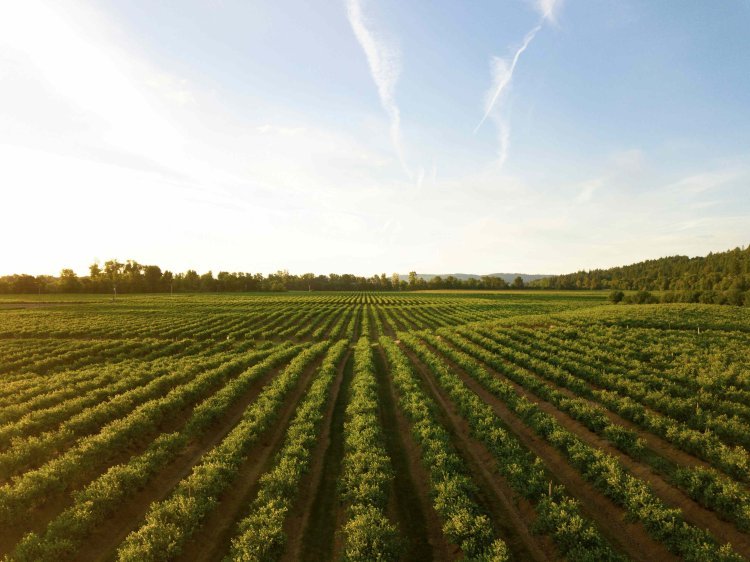Thiamethoxam: A Friend or Foe to Soil Biodiversity?
The use of chemical insecticides has revolutionized pest control in agriculture, providing farmers with the tools to protect crops from harmful pests. One such widely used insecticide is Thiamethoxam, a member of the neonicotinoid family. Thiamethoxam protects against various pests, improving crop yields and farming productivity. However, its widespread use has raised concerns about its environmental impact, particularly on soil biodiversity. This blog explores the effects of Thiamethoxam on soil health, its potential impact on soil organisms, and whether it is a friend or foe to soil biodiversity.

Thiamethoxam and Its Role in Agriculture
Thiamethoxam is a systemic insecticide, meaning that once it is applied, it is absorbed by the plant and transported throughout its tissues. This allows the insecticide to control both external and internal pests that may feed on the plant. Thiamethoxam is commonly used to control pests such as aphids, whiteflies, leafhoppers, and termites. Its use has significantly improved pest management in crops such as cotton, vegetables, and fruits, helping farmers achieve higher yields and better-quality produce.
However, Thiamethoxam's widespread use raises concerns about its long-term impact on soil ecosystems. As a systemic insecticide, it is absorbed by plants and may eventually be released into the surrounding soil, affecting the organisms that reside there. Soil biodiversity is critical for maintaining soil health and fertility, so understanding how Thiamethoxam impacts these ecosystems is essential.
The Role of Soil Biodiversity in Agriculture
Soil biodiversity refers to the variety of organisms found in the soil, including bacteria, fungi, earthworms, and other microorganisms. These organisms are crucial in maintaining soil health, promoting nutrient cycling, enhancing water retention, and supporting plant growth. Healthy soil biodiversity is essential for sustainable farming practices, as it helps maintain the balance between soil nutrients, supports plant roots, and reduces the reliance on chemical fertilizers.
Soil organisms, such as earthworms and beneficial microbes, break down organic matter, releasing nutrients into the soil plants need to grow. Additionally, certain microbes form symbiotic relationships with plants, enhancing nutrient uptake, particularly nitrogen and phosphorus. These interactions are vital for maintaining agricultural land's long-term productivity and fertility.
However, using insecticides, including Thiamethoxam, can disrupt this delicate balance, potentially harming beneficial organisms and reducing soil biodiversity.
How Thiamethoxam Affects Soil Organisms
Like other neonicotinoid insecticides, thiamethoxam targets pests' nervous systems. While it effectively controls a wide range of insects, its impact on non-target organisms, including soil-dwelling species, has been a subject of concern.
- Soil Microorganisms: Thiamethoxam is water-soluble, which means it can be carried into the soil when it rains or through irrigation. Once in the soil, it can affect microorganisms, such as bacteria and fungi, which are critical in nutrient cycling. Research has shown that Thiamethoxam can alter the composition of microbial communities in the soil, potentially reducing the abundance of beneficial microbes. This disruption can minimize nutrient availability for plants, negatively affecting crop growth.
- Earthworms and Soil Invertebrates: Earthworms are one of the most important soil organisms, as they help aerate the soil, enhance water infiltration, and promote nutrient cycling. Studies have shown that Thiamethoxam can be toxic to earthworms, potentially reducing their populations in treated fields. Reduced earthworm activity can lead to compacted soils, poorer drainage, and a decline in soil structure, which can affect plant growth. Additionally, the loss of other soil invertebrates can disrupt the food chain, further affecting soil health.
- Pollution of Groundwater and Soil: Thiamethoxam is less likely to persist in the soil than other insecticides, its breakdown products can still harm soil organisms. Over time, repeated applications may accumulate in the soil, increasing the risk of contamination and harming soil biodiversity.
Despite these potential risks, it’s important to note that the impact of Thiamethoxam on soil organisms depends on various factors, such as application rates, soil type, and environmental conditions. When used appropriately and according to recommended guidelines, its effects on soil biodiversity can be minimized.
For farmers looking for comprehensive pest control with minimal environmental impact, Emoxam Emamectin Benzoate 3% + Thiamethoxam 12% WG offers an option that combines the effectiveness of both chemicals while promoting better pest management strategies. This dual-action insecticide can help address the challenge of pest resistance while balancing environmental considerations.
The Impact on Soil Fertility
Soil fertility is directly linked to soil biodiversity. Healthy soil organisms contribute to the breakdown of organic matter, enhancing the availability of nutrients for plants. Thiamethoxam may impair this process by reducing the populations of beneficial soil organisms.
- Nutrient Cycling Disruption: Soil microbes, including bacteria and fungi, break down organic matter, recycling nutrients such as nitrogen, phosphorus, and sulfur. Thiamethoxam’s effect on these organisms can slow down nutrient cycling, reducing nutrient availability in the soil. This, in turn, can result in lower crop yields and the need for additional chemical fertilizers to make up for the nutrient deficiency.
- Soil Structure and Water Retention: Soil biodiversity, particularly earthworms and other invertebrates, is vital in maintaining soil structure and promoting water retention. Reducing earthworm populations due to Thiamethoxam exposure can lead to compacted soils, making it harder for roots to penetrate and absorb water and nutrients. This can exacerbate drought stress and waterlogging, affecting plant health and productivity.
Thiamethoxam’s Role in Integrated Pest Management (IPM)
Despite concerns about its impact on soil biodiversity, Thiamethoxam remains an important tool in Integrated Pest Management (IPM) strategies. IPM is an approach that combines multiple pest control methods to minimize the reliance on chemical pesticides and reduce their environmental impact.
- Targeted Use: In an IPM system, Thiamethoxam is applied only when pest populations exceed an economic threshold, reducing the frequency of pesticide use and minimizing its impact on non-target organisms. By integrating biological control methods, crop rotation, and soil health management practices, farmers can reduce the overall reliance on chemical insecticides like Thiamethoxam.
- Reduced Pesticide Resistance: Thiamethoxam's dual-action mechanism (when combined with Emamectin Benzoate) can help prevent the development of resistance in pest populations, reducing the need for more harmful pesticides in the future. This proactive approach to pest management can help maintain healthier soil ecosystems over time.
"In farming, success is not just about the quantity of crops harvested, but about nurturing the soil for the future."
Is Thiamethoxam a Friend or Foe to Soil Biodiversity?
The answer to whether Thiamethoxam is a friend or foe to soil biodiversity depends on how it is used. When applied correctly and in moderation, thiamethoxam can provide effective pest control without severely impacting soil organisms. However, overuse or improper application can lead to a decline in soil biodiversity, ultimately affecting soil health, plant growth, and agricultural productivity.
Farmers must balance the need for pest control with maintaining healthy soil ecosystems. By integrating sustainable practices, such as reduced pesticide use, crop diversification, and soil health management, farmers can minimize the negative impacts of Thiamethoxam on soil biodiversity. Through these efforts, Thiamethoxam can continue to be a valuable tool in the fight against pests while ensuring that soil health is preserved for future generations.
The challenge lies in finding the right balance between pest control and soil conservation, making informed decisions that support both productivity and sustainability in the long term.
What's Your Reaction?












